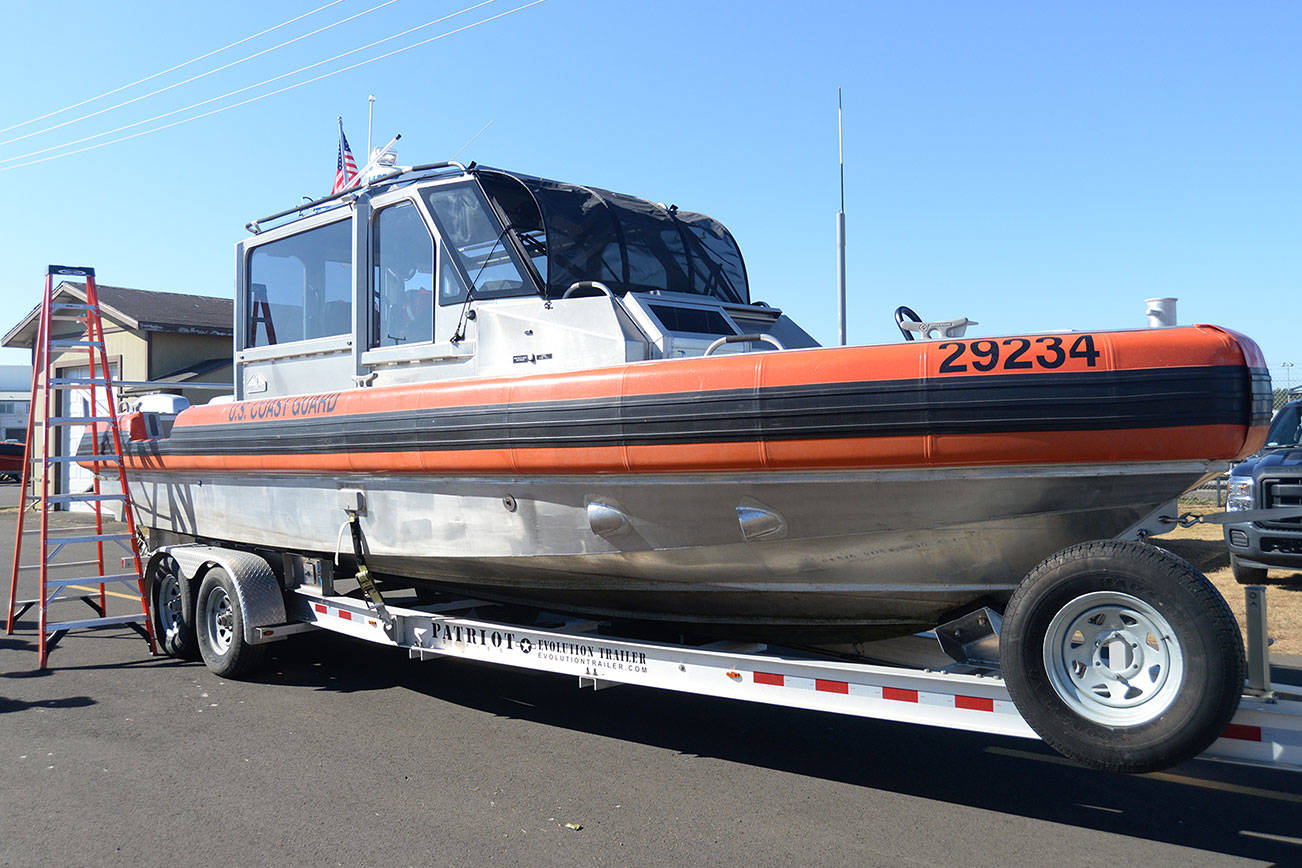There was a common theme Tuesday morning at the Westport Marina public boat launch. There, the military was displaying the tactics, personnel and equipment to be used if, and when, the “big one” hits:
“Man, I hope we never have to use it, but I sure am glad it’s there if we do.”
An effective disaster relief plan has many moving parts. Personnel and equipment from the Army, Navy, Marines, U.S. Coast Guard and National Guard all come together to form a cohesive team that can provide anything from food, water and medical supplies to heavy construction equipment to clear roads in the aftermath of a disaster.
“I thought it was very well done. Everyone went out of their way to demonstrate the equipment, capability and manpower the military will bring in the event of a major disaster,” said Grays Harbor County Sheriff Rick Scott, who was among the spectators.
When asked why a public event of this type was important, Scott said, “Being able to see them today and talk about this helps us with planning as we move forward, working with various communities and stakeholders to plan for a disaster. Plus, it’s always nice to see it for the first time on a nice sunny day in Westport rather than in the middle of (a disaster).”
All the ground equipment that hit the shore came from the USS Anchorage, a 684-foot San Antonio-class amphibious transport dock sitting out of sight offshore. The ship launches amphibious craft and landing craft and is often used for disaster response and humanitarian efforts.
As about 30 of the local dignitaries lucky enough to score a helicopter ride departed to the Anchorage and most of the crowd had split off to view the equipment, two Navy officers stood on the boat launch dock, watching as the landing craft backed out on its way to the ship. Both noted that in an actual disaster situation, the landing would look quite a bit different.
“In the event of a tsunami it’s doubtful we would use the marina to land,” said Lt. Cmdr. Todd Stansfield, U.S. Third Fleet Emergency Management Planner and Anti Submarine Warfare Planner. “It would probably be filled with debris in that event.”
Lt. Cmdr. Brian Sauerhage, a Navy ordnance disposal officer, added, “We would probably end up landing on a beach south of here. The South Beach area.” He said the goal of a landing is to get whatever is needed to disaster victims as quickly and efficiently as possible, and to repair any roads in the area.
“The goal is to get to the east/west roads first,” he said. That would allow land transport of aid and offer escape routes for stranded disaster victims.
Local law enforcement and emergency services were there to watch: Hoquiam Police Chief Jeff Myers, Sheriff’s Office Chief Criminal Deputy Steve Shumate, Art Cole from South Beach EMS and too many more to list. Also there were Hoquiam City Administrator Brian Shay, Westport Marina Business Manager Molly Bold, Port Commissioner Jack Thompson and County Commissioner Randy Ross. Several hundred civilians showed up to watch the drill and even got a chance to walk around inside the three helicopters and other pieces of equipment on display at the Coast Guard station next to the launch.
“I was really happy with the turnout,” said Scott. “I was pleased to see not only the number of local officials who showed up, but the number of citizens who came out and got to take advantage of watching that happen.”
The morning kicked off three helicopter landings, including an H60 Jayhawk T-model U.S. Coast Guard rescue helicopter and an Army medical helicopter, which whipped up quite the dust storm as it landed mere yards from the boat ramp. The Coast Guard helicopter is stationed in Astoria, Ore., and it is used for rescues along the coast up to the Quillayute River and, if needed, can go as far as Lewiston, Idaho, and is the only helicopter in the region that is able to reach out past 100 miles.
A landing craft made its way into the south entrance of the marina, slowly navigating its way to the boat launch. The gate at the bow of the craft was lowered, and several pieces of equipment were driven up the launch, including a front end loader, an Army ambulance and several Hummer-styled vehicles. They were then parked and on display just outside of or inside the Coast Guard base for the public to view inside and out.
The Anchorage also has the ability to carry two or three Air Cushioned Landing Craft, large airboats that can operate in tough conditions and various terrains. They were not on display at the marina, but could be a major component of the military’s disaster response to the area, said Stansfield.


